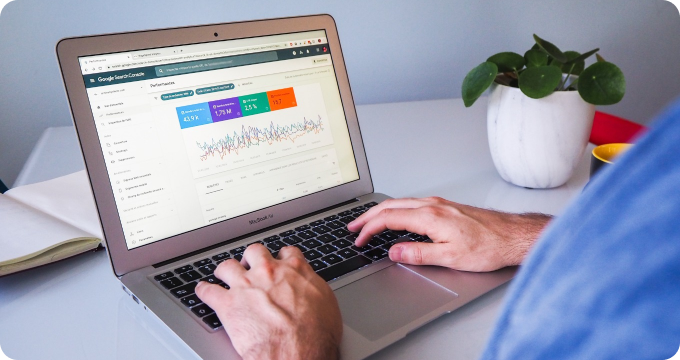7 Essential Questions to Ask Before Choosing Software for Your Dance Studio
- January 30, 2024
- 3 minutes
Understanding the factors that contribute to the efficient running of a dance studio is akin to understanding the intricate steps of a ballet performance; each element plays a significant role in producing a harmonious and successful outcome. Today, with the rapid advancement of technology, dance studios are not left out from this digital revolution. This brings us to consider dance studio software, a technological tool designed to streamline the administrative processes and enhance the overall management of a dance studio. But how do you determine the best fit for your studio? Here are seven essential questions to ponder upon before making that pivotal choice.
-
What is the functionality scope of the software?
In the realm of dance studio software, functionality is king. Before making your choice, one must consider the array of functions that the software provides. Functions such as student registration, scheduling, billing, and progress tracking are fundamental. However, sophisticated software might also offer additional features, such as costume management, music library, and choreography planning. Using the Pareto Principle, or “80/20 Rule”, evaluate if the software provides the most significant functions that will cater to 80% of your operational needs.
-
How user-friendly is the software interface?
An intuitive user interface operates like a graceful waltz, allowing users to glide through tasks seamlessly. It is crucial the software interface is user-friendly and easy to navigate even for users who may not be technologically inclined. Using Fitts’ Law, a predictive model of human movement in human-computer interaction, assess the software based on how much effort is required to complete a task. The easier and more accessible the tasks are, the more efficient the software.
-
Does it offer strategic integration?
Strategic integration refers to the software's ability to integrate with other applications or platforms used in your studio. For instance, integration with social media platforms, email marketing applications, or accounting software can enhance the overall efficiency and productivity of your studio. This principle is rooted in the theory of Complementary Network Externalities, where the value of a software increases when it can be combined with others.
-
What is the cost and return on investment?
In a perfect world, software cost wouldn't be a concern. But, in the real world, cost plays a massive role in decision-making. While considering cost, it's crucial to assess the potential return on investment (ROI). Using the concept of Cost-Benefit Analysis, weigh the potential benefits of the software against its cost. The software's value is in its ability to streamline operations, save time, reduce errors, and ultimately, increase profits.
-
Does the software offer support and updates?
Even the best software needs occasional troubleshooting and updates. Therefore, it's vital to understand the vendor's support structure and update policy. Continuous support and regular updates based on customer feedback and technological advancements are central to the software's long-term sustainability and effectiveness, as suggested by the law of Iterative Development in software engineering.
-
Is the software scalable?
Scalability is the software's ability to adapt to your studio's growth without the need for a complete overhaul. Consider whether the software can accommodate more students, offer more functions, or provide more storage as your studio grows. This question is grounded in the principles of Scalability Theory in systems engineering, which posits that a scalable system can handle increasing amounts of work in an efficient manner.
-
Does the software cover data security and privacy?
In an era where data breaches and cyber threats are escalating, the importance of data security and privacy cannot be understated. The security measures the software takes to protect your studio's and your students' data is paramount. One might consider the principles of Information Theory, which indicate that securing information can prevent unauthorized access and potential disruptions.
In conclusion, selecting the perfect dance studio software is more than just a dance. It's a carefully choreographed ballet that requires a deep understanding of your studio's needs, a thorough assessment of the software's capabilities, and a clear vision of the studio's future. Remember, the best software is not necessarily the most expensive or the most popular one, but the one that aligns best with your studio's operations, enhances your efficiency, and ultimately contributes to your studio's success.
Learn More
Unleash the rhythm within and elevate your dance studio to new heights by diving deeper into our enlightening blog posts about dance studio software. For an unbiased, comprehensive view, they are encouraged to explore our meticulously curated rankings of the Best Software for Dance Studios.
Popular Posts
-
 5 Compelling Reasons Why Your Dance Studio Needs Specialized Software
5 Compelling Reasons Why Your Dance Studio Needs Specialized Software
-
 How to Budget Effectively for Dance Studio Software
How to Budget Effectively for Dance Studio Software
-
 Ask These Questions to a Dance Studio Software Provider to Choose the Right One for You
Ask These Questions to a Dance Studio Software Provider to Choose the Right One for You
-
 What are Dance Studio Management Softwares and How Do They Work?
What are Dance Studio Management Softwares and How Do They Work?
-
 9 Things I Wish I'd Known About Dance Studio Software Before I Invested in One
9 Things I Wish I'd Known About Dance Studio Software Before I Invested in One






